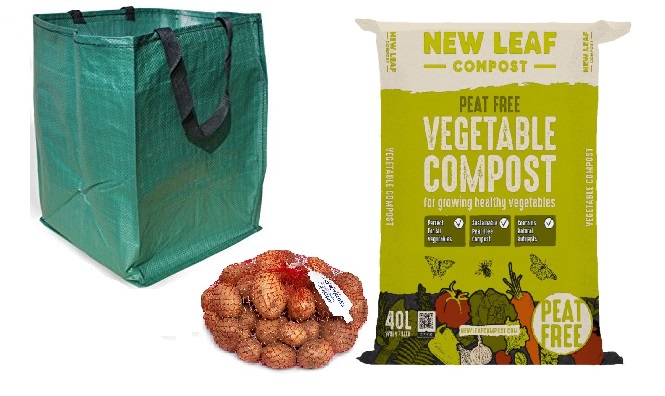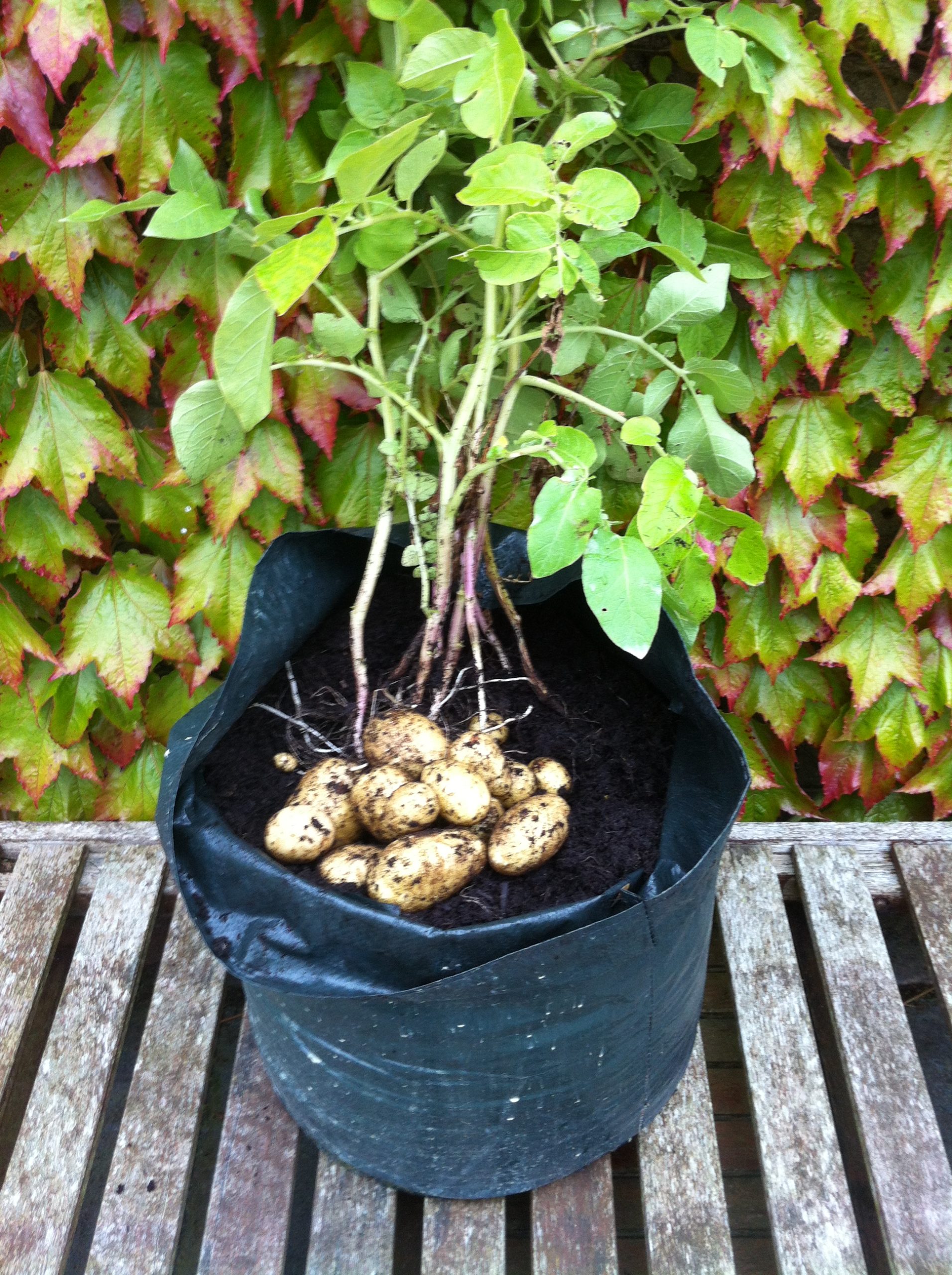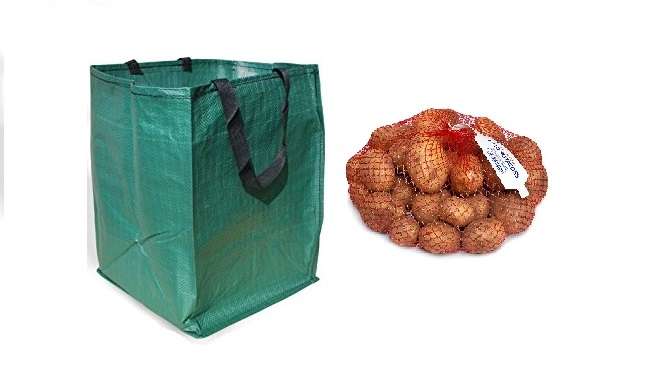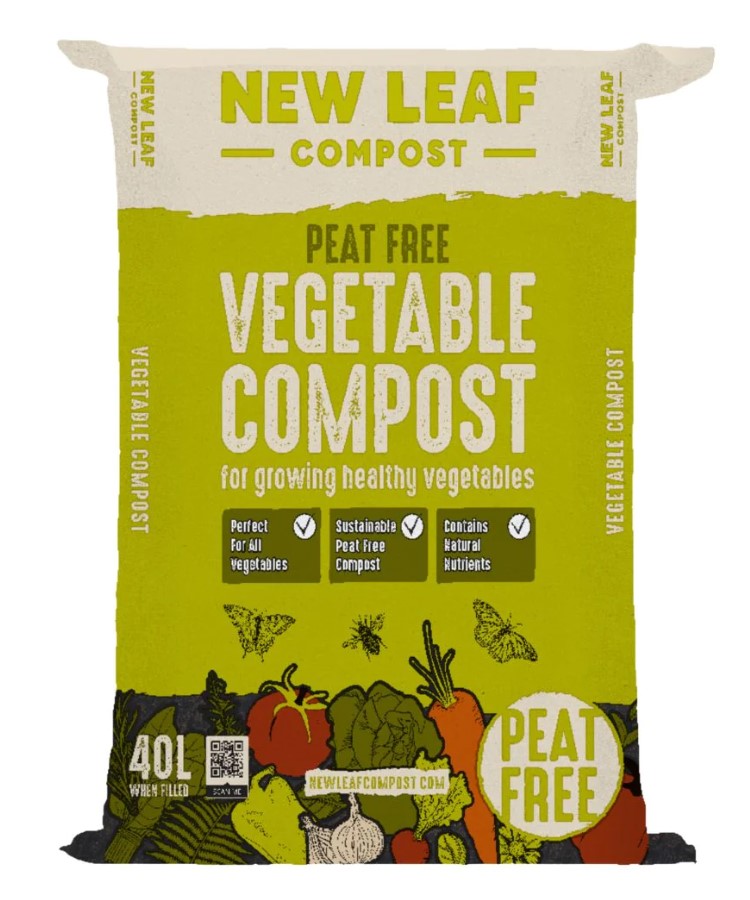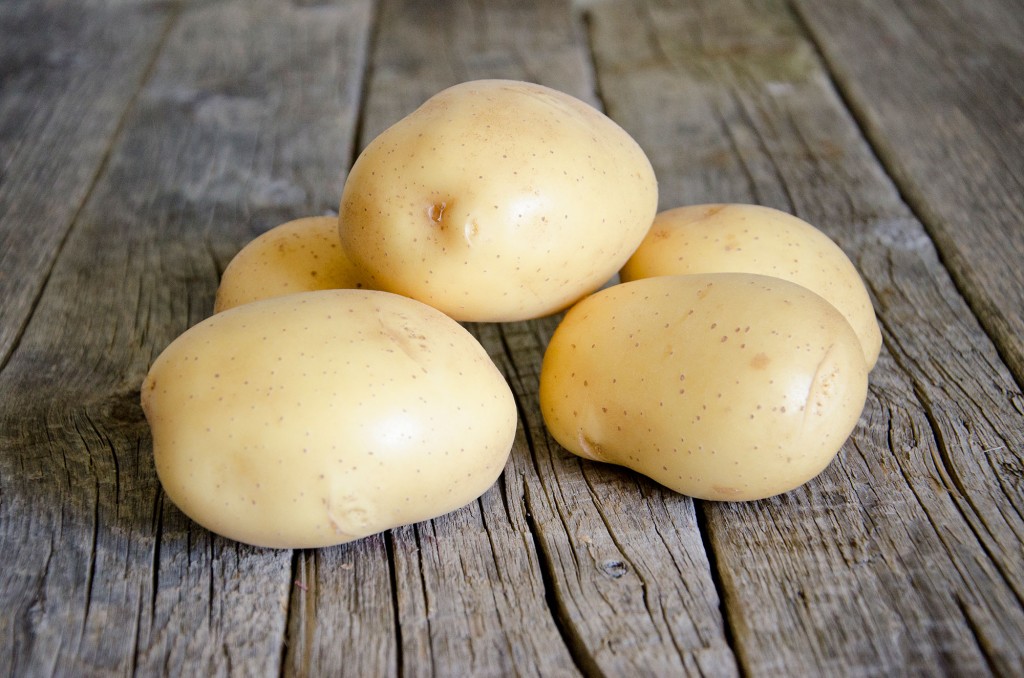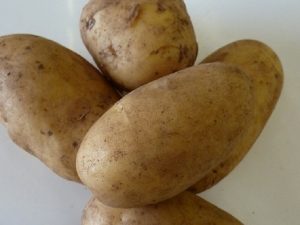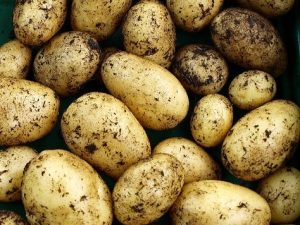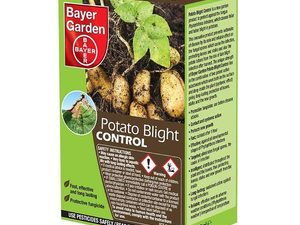Complete Seed Potato Growing Kit – Grow Your Own Potatoes Kit
From £7.49
Description
Grow Your Own Potatoes Kit – Complete Seed Potato Growing Kit
Experience the joy of cultivating your own fresh, homegrown potatoes with our Seed Potato Growing Kit. Designed for gardeners of all skill levels, this comprehensive kit provides everything you need to ensure a successful and abundant harvest, whether you’re planting in a small garden, balcony, or patio. Each kit comes with 1 grow bag, 3 seed potatoes and 1 bag of peat free vegetable compost.
Kit Contents:
- Durable Grow Bag – Crafted from high-quality, breathable material to promote healthy root development and optimal drainage. Each bag is reusable, offering multiple growing seasons.
- Blight Tolerant Seed Potato – 3 tubers, handpicked for their flavor, versatility, growing success and resistance to blight!
- Optional Compost Add-On – Choose the option to include bags of peat free nutrient-rich compost, specially formulated for growing vegetables, ensuring an ideal growing medium for maximum yield and performance.
This kit simplifies the potato-growing process, offering a convenient and efficient solution for producing a bountiful crop of potatoes. Ideal for both new and experienced gardeners looking to enjoy fresh, flavorful produce straight from their own space.
Start your homegrown journey with confidence and ease!
CONTAINER PLANTING GUIDE
You will require approx. 40 litres to grow a good crop of from 3 seed potatoes. Your container will need sufficient drainage in the bottom, use a layer of stones or broken pots in the base. Use general purpose peat free compost rather than garden soil (if using garden soil, add a little potato fertiliser).
Add a 6-8 inch layer of compost to the bottom of the container, place the seed potatoes with eyes facing up about 2 inches into the compost. Cover with 5-6 inches of compost. As the potato shoots grow, add more compost. Continue this earthing up until the compost is 2-3 inches below the rim of the container.
Check out our Grow Guide for help growing potatoes in the ground.
**DISPATCH WILL BEGIN DECEMBER/JANUARY FOR ALL VARIETIES **
Please don’t hesitate to contact Alex if you have any questions.
Potatoes held in cold storage. You will not find better quality potatoes anywhere else.
More than 50 varieties available, we can post as many tubers as you need. Likewise, please get in touch if you require a larger quantity than on the website.
Grow yourself some genuine IRISH potatoes, great taste, great quality.
Patch are specialists in all things potato. Our clients receive only the highest quality seed potatoes. Order with confidence.
Wherever possible, patch will group deliveries together.
Before packing, visual checks completed on all items. Therefore, please advise us immediately you receive a damaged item.
Additional information
| Weight | 2 kg |
|---|---|
| Options |
Planting Advice
WHERE?
Seed potatoes can grow in almost any soil type, but ideally they prefer to be grown in deep, well-drained, loamy soils that are not too heavy. These can be enriched with plenty of organic materials to help retain water and nutrients for your potatoes to grow big and healthy.
Potatoes hate the frost, so a nice site facing south to get plenty of sun is ideal.
Please note that potatoes are also susceptible to a wide range of pests, including slugs and aphids.
If you are planting potatoes every year, they should be planted in a different position each year. This is known as crop rotation. A minimum of 3-4 years should be left before planting again in the same position. This helps reduce diseases among the crop.
WHEN?
First earlies, second earlies and maincrop – these terms refer simply to how long it takes between planting and harvesting.
Earlies – Plant March to April (when weather turns a little milder), minimum 10 weeks to mature (13-15 weeks for second earlies), harvest around June.
Maincrop – Plant mid to late April, allow approximately 20 weeks to mature, to be harvested August onwards. Maincrop take up the most room in your garden but they are the best varieties to store for eating at a later date.
ON ARRIVAL
Whenever you receive your seed potatoes you should begin the process of ‘chitting’. This just means encouraging the potato grow a sprout. This is best done in a frost-free sunny area. An easy method is to leave your potatoes in an egg carton, with the blunt end with most eyes facing upwards. The short shoots that appear will help get the potatoes off to a good start when planted. While not essential for maincrop varieties, we strongly recommend chitting for your earlies.
Small green or purple shoots approximately 1 inch long are ideal. Long white shoots are a sign of too much heat and not enough light.
PLANTING
Planting usually starts by making a ‘V’ shaped drill about 5” deep in your soil. Or, if you have limited room and light enough soil you can make a hole to carefully drop your potato into.
Rows should be made 24” apart for Early varieties, and 30” apart for Maincrop.
Seed spacing within the row, Earlies should be placed 12” apart, Maincrop 15”.
After planting out along the drills, carefully cover each potato with a handful of peat or fine soil. Make sure not to snap off the sprouts, they are fragile! The potatoes should have a covering of approx 3” of soil.
Small green or purple shoots approximately 1 inch long are ideal. Long white shoots are a sign of too much heat and not enough light.
EARTHING UP!
As your plants grow, earth or soil needs to be used to cover the potatoes as they begin to show above the surface. This is to prevent the tubers turning green from exposure to light, and therefore inedible.
Earthing up can be done to cover some leaves as well; this will not do your crop any harm. Repeat the process until the ridges become 8 inches high.
FOOD AND WATER
Adding fertiliser can increase yields, but avoid high nitrogen rates as they will delay crop maturity.
Potatoes love moisture, particularly when the tubers begin to form around flowering time. Giving the crop a heavy soaking less often is preferable as this gets down deep through the roots.
Rainfall should be sufficient, especially in the UK and Ireland! However, in periods of drought they should
Small green or purple shoots approximately 1 inch long are ideal. Long white shoots are a sign of too much heat and not enough light.
HARVESTING
When to harvest depends on dates of planting, variety and also weather conditions throughout the season. Generally:
First Earlies – We like to eat when freshly harvested, June-July in small amounts.
Second Earlies – Same as first, small quantities eaten fresh in late June-July.
Maincrop – Lift from September onwards normally. When storing, ensure the tubers are thoroughly dried, and stored in a breathable sack, in a cool, dark dry place.
* These are growing guidelines, and depend on region and climate. For further details do not hesitate to contact us via phone or email on:
+44 (0) 28 30 851661 | patch@mccreightpotatoes.com

